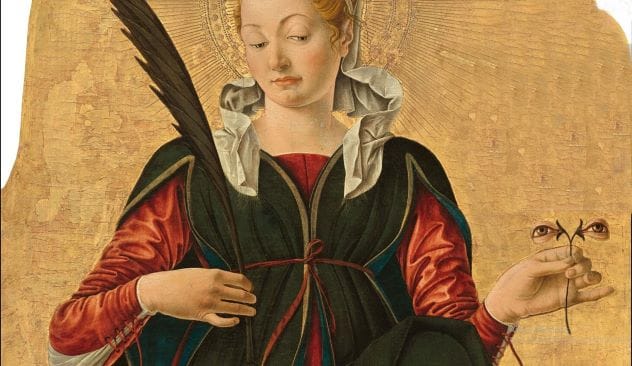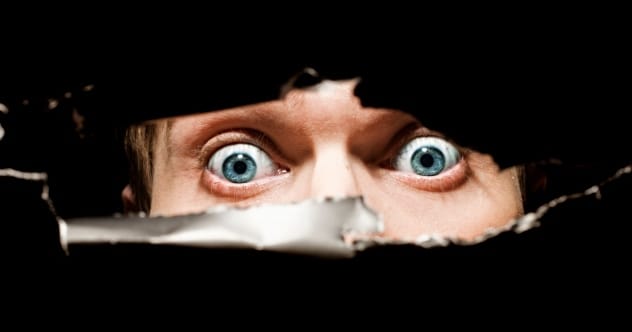Have you ever thought about why eyes hold such a deep fascination for us? Around the world, they’re not just for seeing. People see them as gateways to the soul, a sign of a higher power, tools for prophecy, and symbols of inner spirit and the universe. This isn’t a new trend; it’s a fascination that goes back thousands of years and touches almost every culture. Join us as we look at ten amazing ways different cultures are truly captivated by eyes.
1. The Evil Eye: A Universal Gaze of Caution
It’s a belief found almost everywhere: the ‘evil eye’. You might hear it called “mal de ojo” in Mexico, “mati” in Greece, or “olho gordo” in Brazil. Whatever the name, the idea is the same. It’s the thought that a powerful, envious stare can bring bad luck or harm to someone. It’s a very old idea, possibly starting in ancient Greece or Rome.
Back then, people believed eyes had immense power, enough to curse or injure with just a look. Over time, this superstition spread globally, picking up unique twists from each culture that adopted it. Think about it – a simple glance holding so much feared power!
To protect themselves, people came up with all sorts of defenses. Brides often wore veils, hoping to shield themselves from jealous looks. In many ancient societies, baby boys were highly valued, so they were given special charms, often with blue beads, to keep them safe. In India, it has been a tradition to line babies’ eyes with kajal, a type of charcoal powder, as a form of protection. No matter where you travel, you’re likely to find symbols and stories about the evil eye, a testament to its enduring grip on our imagination.
2. The Eye of Horus: Ancient Egyptian Protection
The Eye of Horus is another ancient symbol that’s still recognized worldwide. It comes from ancient Egypt, where myth tells of the god Horus losing his eye in a fierce battle to avenge his father. What a story! His eye was said to have been magically restored by a goddess, and from then on, the symbol of his eye became a powerful talisman. It stood for protection, health, and restoration.
This wasn’t just a minor symbol; it was one of the most common in ancient Egypt. Archaeologists have found it in tombs that date back to the Fourth Dynasty, around 2613 to 2494 BC. That’s incredibly old! The Eye of Horus is actually made up of six distinct parts. Each part represents a fraction in a geometric sequence. What’s truly amazing is that when these parts are laid over an image of the human brain, each one lines up with one of the six major sensory centers. These are thought to represent our six senses: smell, sight, thought, hearing, taste, and touch.
Did you know that many believe the Rx symbol you see on doctor’s prescriptions today actually evolved from the Eye of Horus? This connection comes from its strong association with healing. Even now, thousands of years later, you’ll find the Eye of Horus displayed in homes as a charm to ward off danger and threats. It’s a beautiful example of how ancient symbols can carry meaning through millennia.
3. Ocular Opals: Gemstones of Vision and Fear
Opals are truly unique gemstones. They are the only ones that naturally refract light in a way that’s strikingly similar to how our own eyes perceive color. In the human eye, light passes through a prism, and the different wavelengths split into the spectrum of colors we see. Opals do something similar: white light enters the stone, splits into various colors, and then bounces back, giving each gem its distinctive, shimmering color pattern.
This eye-like quality led to some fascinating beliefs. Some cultures treasured opals for their supposed magical qualities. They were thought to shield people from eye diseases and, get this, even grant invisibility! However, not everyone saw opals in such a positive light. For others, they were symbols of evil. There were tales of witches using black opals to boost their dark powers or to control people they wished to harm. Some even associated opals with the eyes of creatures like toads and snakes, which many found repulsive.
Interestingly, J.K. Rowling tapped into this folklore in the Harry Potter series. She references opals three times, using the traditional belief that these stones provide ‘eyes’ to see into the future. In her wizarding world, opals become powerful symbols of vision, hinting at what might happen to the characters. It’s a modern nod to an age-old superstition!
4. Daruma Dolls: Eyes on the Prize in Japan
Take one look at a Daruma doll, a traditional Japanese figure, and its eyes—or lack thereof—will immediately catch your attention. These distinctive dolls, featuring the face of a bearded man, are sold with large, blank white circles where their eyes should be. But these blank eyes are only temporary.
When someone receives a Daruma doll as a gift, they paint in one of the eyeballs. This signifies setting a specific life goal or making a wish. The second eye? That one remains blank until the goal is achieved or the wish comes true. Only then is it filled in, completing the doll’s gaze. The dolls are modeled after Bodhidharma, a 5th-century monk. Legend says he meditated facing a cave wall for an astonishing nine years! He was so dedicated to finding enlightenment that his limbs eventually withered, but his spirit remained strong.
The prominent eyes on the doll symbolize his unwavering determination and the laser-like focus needed to achieve a significant goal. It’s all about keeping your ‘eye on the prize’. So, it’s no surprise that a common expression in Japan to wish someone good luck and success is “Both eyes open!” It perfectly captures the spirit of the Daruma doll.
5. The Third Eye of Shiva: Inner Clarity and Wisdom
Hindu legend tells a dramatic story about the god Shiva and his third eye. It’s said that his third eye opened after Kama, the god of lust, shot him with an arrow. Angered and frustrated by this temptation, Shiva unleashed the power of his third eye and burned Kama to ashes. In both Buddhist and Hindu traditions, “awakening one’s third eye” isn’t about a physical eye; it’s a powerful metaphor for achieving deep inner clarity and spiritual insight, just as Shiva did to overcome his temptation.
You’ve probably seen the bindi, a colored dot or sticker often worn by women on their foreheads, particularly in South Asian cultures. This beautiful adornment is closely linked to the symbolic importance of the third eye. It’s typically placed on the spot believed to be the sixth chakra (or ajna chakra), an energy point located slightly above and between the eyebrows. This chakra is associated with intuition, perception, and wisdom.
Interestingly, some scientists and philosophers have also explored concepts akin to a ‘third eye’. The pineal gland, a small endocrine gland in the brain, has been described by some as a dormant “third eye.” It controls the hypothalamus, which is vital for releasing hormones and regulating behavior. The famous philosopher René Descartes even called the pineal gland the “principal seat of the soul” and the place where all our thoughts are formed.
6. Unmatching Eyes: The Allure of Heterochromia
We all know Alexander the Great, the legendary Macedonian king who reshaped history. But did you know he reportedly had two different colored eyes—one blue and the other brown? This captivating trait is due to a condition called heterochromia, which happens when there’s an imbalance of melanin in the irises.
There was a time when having two different colored eyes sparked fear and suspicion. In some Eastern European cultures, a child born with heterochromia was believed to have had one eye swapped with that of a witch! People with this condition were sometimes considered evil or linked to supernatural happenings. Thankfully, times have changed. Today, heterochromia is generally seen as a unique and intriguing characteristic. Some well-known people with this trait include celebrities like Kate Bosworth, Dan Aykroyd, Jane Seymour, and MLB pitcher Max Scherzer.
Heterochromia isn’t limited to humans; some animals, like dogs and cats, can also have it, giving them a very dramatic appearance. Certain Native American traditions referred to dogs with two different colored eyes as “ghost dogs,” believing they could see heaven with one eye and Earth with the other. Although heterochromia affects less than one percent of the world’s population, this striking feature even has its own day of recognition: July 12th is National Heterochromia Day, a time to appreciate the beauty of different eyes!
7. The Eye of Providence: An All-Seeing Symbol
The Eye of Providence, an open eye often set within a triangle, is a potent symbol with a fascinating history. One of its earliest appearances was in Renaissance religious art, where it represented God’s omnipresence—His ability to be everywhere at once. For example, Pontormo’s 1525 painting, Supper at Emmaus, features this divine eye, symbolizing God the Father within the Holy Trinity triangle.
Fast forward to 1782, when the Great Seal of the United States was unveiled. Prominently featured on it is the Eye of Providence, placed atop an unfinished pyramid. It was Charles Thomson, Secretary of the Continental Congress, who developed this imagery, with the eye signifying God’s watchful care over the newly formed nation. Some people link this symbol to Freemasonry, but that connection isn’t quite accurate regarding its origin on the seal. While Benjamin Franklin was the only Mason on the committee that designed the seal, the all-seeing eye only became a common Masonic symbol in 1797, a full fourteen years after Congress adopted the seal.
Despite its relatively straightforward origins, the all-seeing eye has become a magnet for conspiracy theories involving the Illuminati, supposed “secret elites,” and even pop stars like Madonna, Kanye West, and Jay Z, who have used similar imagery in their art. Perhaps this is all just part of our enduring human obsession with powerful eye symbolism.
8. The Eyes of the God Tāwhirimātea: Stars of the Maori New Year
The Maori New Year celebration, known as Matariki, revolves around a star cluster also called Matariki (Pleiades). Its full name in Maori tradition is sometimes Ngā mata o te ariki Tāwhirimātea, meaning “the eyes of the god Tāwhirimātea.” This name comes from a powerful creation legend about Ranginui (the sky father) and Papatūānuku (the earth mother).
According to the myth, their children, unhappy living in darkness between their parents, decided to separate them. They enlisted Tāne Mahuta, the god of the forest, who successfully pushed his parents apart. However, another child, Tāwhirimātea, the god of winds and storms, was enraged by this act. Out of love for his parents and fury at his siblings, he gouged out his own eyes (or Tane Mahuta’s eyes, in some tellings), crushed them, and cast them into the heavens. These shattered eyes became the Matariki star cluster.
Each of the nine visible stars in the Matariki cluster is considered a separate “eye” and holds special significance for the Maori people. These stars include:
- Matariki herself, the mother of the other stars in the cluster, connected to well-being and health.
- Pōhutukawa, which connects to those who have passed away.
- Waitī, linked to freshwater bodies and the food within them.
- Waitā, associated with the ocean and seafood.
- Waipuna-ā-rangi, connected to the rain.
- Tupuānuku, linked to food grown in the ground.
- Tupuārangi, associated with food from trees.
- Ururangi, connected to the winds.
- Hiwa-i-te-rangi, the youngest star, to which wishes and aspirations are sent.
For the Maori, the celebration of Matariki is a time for remembrance, for honoring ancestors, for celebrating community, and for making plans for the future. All this inspiration is drawn from the story of Tāwhirimātea’s eyes lighting up the sky.
9. Two Eyes—On a Platter: The Story of St. Lucy

Santa Lucia, also known as St. Lucy, is revered as the patron saint of light and sight. She is often depicted in a rather startling way: with her own two eyes resting on a platter. This striking and somewhat bizarre symbolism underscores the deep devotion people of Christian faith have for her as a protector of vision.
The story of how St. Lucy came to be associated with disembodied eyes is a tragic one. Born to a noble family in Sicily, Italy, around AD 283, she lost her father at a young age. Lucy dedicated her life to God and used her dowry to help the poor. However, her mother arranged for her to marry a pagan man who disapproved of her charitable acts and Christian faith. When Lucy refused to renounce her faith, her suitor (or husband, in some versions) reported her to the Roman governor. The governor demanded she make sacrifices to Roman idols, but she steadfastly refused. Angered by her defiance, he had her tortured.Accounts vary on what happened next: some say the Romans gouged out her eyes, while others claim she plucked them out herself to deter an admirer or to show her devotion.
The dramatic tales of St. Lucy greatly inspired Renaissance artists, who were known for their flair for the dramatic. Consequently, paintings of her frequently include this macabre detail. In Francesco del Cossa’s painting Saint Lucy, she holds a branch with two eyeballs at its tips instead of flowers. Another painting, also titled Saint Lucy, by Francisco de Zurbarán, portrays her holding a pewter dish upon which a pair of disturbingly realistic eyeballs rest.
10. The Whites of the Eyes: Sanpaku and Superstition
In an August 1963 interview, macrobiotic proponent George Ohsawa made a chilling prediction: President John F. Kennedy would soon meet a tragic end. When Kennedy was assassinated later that year, Ohsawa attributed his foresight to observing that the president had “Sanpaku” eyes. To Ohsawa, this was a clear sign of impending doom and sickness.
“Sanpaku,” a Japanese term, roughly translates to “three whites.” It describes eyes where the white part (the sclera) is visible either above or, more commonly, below the iris. According to Ohsawa, who popularized the concept in the West, the observation of the eye, specifically looking for Sanpaku, was the first step in Oriental Physiognomy (face reading). He claimed that individuals with Sanpaku eyes are in a state of physical or emotional distress. He further suggested they might be untrustworthy, suspicious, fearful, and particularly prone to accidents and premature death. Besides JFK, other famous figures often cited as examples of having Sanpaku eyes include Princess Diana, Abraham Lincoln, and even Charles Manson and Sylvester Stallone, though interpretations vary.
It’s important to note that the concept of Sanpaku is rooted in theories and superstitions that lack scientific proof. While it’s an intriguing idea that plays into our fascination with eyes as indicators of fate or character, it’s wise to remember this next time you notice someone with a little extra white showing in their eyes. It’s more of a cultural curiosity than a diagnostic tool!
From ancient talismans warding off ill will to divine symbols watching over nations, the human eye holds a powerful place in our collective psyche. These ten examples barely scratch the surface of our global fascination. It’s clear that whether seen as a source of danger, a beacon of wisdom, or a mark of destiny, eyes continue to captivate and mystify us across cultures and generations. They remind us that there’s often more to what we see—and how we are seen—than meets the, well, eye.
Which of these eye symbols intrigues you the most? Share your thoughts in the comments below!










